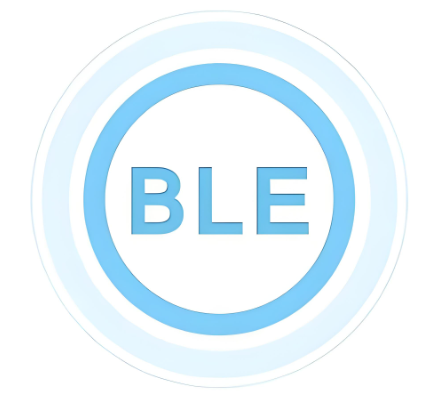In the era of the Internet of Everything, Bluetooth Low Energy (BLE), with its ultra-low power consumption, short-range communication, and standardized protocol, has become a key technology for connecting smart devices. From consumer electronics to industrial applications, from healthcare to smart homes, BLE technology has permeated various fields as an "invisible bridge," redefining how devices interact with each other.

Wearable Devices: Optimizing Battery Life and Functionality
BLE's core advantage lies in its precise combination of low power consumption and small data transmission, making it the preferred communication solution for wearable devices. These devices typically rely on button cells or small lithium batteries and require long-term operation on limited power. BLE significantly extends device battery life by reducing transmission power consumption and optimizing connection intervals. For example, smartwatches maintain a connection with mobile phones via BLE, synchronizing notifications, activity data, and other information in real time, while providing weeks of use on a single charge.
BLE also supports fast data transmission and low-latency communication, meeting the needs of scenarios such as health monitoring and fitness tracking. Devices can collect real-time data such as heart rate, steps, and sleep quality, and upload it to a mobile phone or the cloud for analysis via BLE. Its standardized protocol ensures compatibility across devices from different brands, allowing users to freely combine and combine them to create a personalized health management ecosystem.
Smart Home: From Single-Device Control to Whole-Home Interconnection
BLE technology is reshaping the interactive logic of smart homes. Through BLE Mesh networking, multiple devices can achieve self-organizing and interconnected control without the need for complex wiring or additional gateways. Lights, curtains, air conditioners, and other devices receive commands via BLE, allowing users to trigger scene modes (such as "Movie Mode" or "Sleep Mode") with a single click via a mobile app or voice assistant. Furthermore, BLE's broadcast mode allows devices to proactively transmit status information. For example, a door lock can push real-time open and close status information to a mobile phone, enhancing home security.
In the field of environmental monitoring, BLE sensors can collect data such as temperature, humidity, air quality, and light intensity, and upload it to the cloud via a gateway. Based on this data, the system automatically adjusts devices such as fresh air systems and humidifiers, achieving intelligent environmental management. BLE's low power consumption allows sensors to be deployed in concealed locations for extended periods, reducing maintenance costs.
Healthcare: Supporting Remote Monitoring and Precision Diagnosis
BLE technology enables miniaturization and long-term monitoring of medical devices. Portable medical devices (such as blood glucose meters, blood pressure monitors, and Holter monitors) upload data to medical platforms via BLE, enabling remote diagnosis and medication adjustments. Its encrypted transmission mechanism complies with medical privacy standards, ensuring the security of patient data. For example, some devices offer 24/7 continuous monitoring and trigger abnormality alarms via BLE, providing real-time support for chronic disease management.
In emergency situations, BLE technology can quickly locate patients and transmit critical information. Fall prevention devices detect falls via BLE, automatically call family members or medical institutions, and upload location data to the cloud. Furthermore, BLE's broadcast mode allows devices to send distress signals even when disconnected, improving emergency response efficiency.
Industry and Logistics: A Powerful Tool for Improving Efficiency and Controlling Costs
In industrial scenarios, BLE sensors can collect real-time data such as vibration, temperature, and pressure, and upload it to an analysis platform via a gateway. Combined with machine learning algorithms, the system can predict equipment failures, implement preventative maintenance, and reduce the risk of downtime. BLE's low power consumption allows sensors to be deployed in hard-to-reach locations (such as inside rotating machinery), reducing wiring costs.
In the logistics sector, BLE tags can track the location and status of goods, supporting automated warehouse management. Using positioning technology, the system can monitor goods' location in real time and optimize storage and handling routes. Furthermore, BLE's broadcast mode supports rapid inventory checks. For example, in retail scenarios, smart shelves can automatically detect inventory levels via BLE and trigger restocking reminders.
Consumer Electronics and Emerging Fields: Experience Enhancement and Technology Convergence
BLE technology is pushing the boundaries of consumer electronics. Wireless headphones support multi-device connectivity via BLE, allowing users to quickly switch audio sources between their phones and computers. Smart desk lamps use BLE Mesh to control multiple devices from a single gateway, supporting color temperature and brightness adjustment. Furthermore, BLE's broadcast mode supports near-field interaction between devices, such as automatically triggering contactless payment when a phone is near a payment terminal, enhancing the user experience.
In emerging fields, the integration of BLE with other technologies (such as LoRa and Wi-Fi) is emerging. For example, agricultural sensors collect soil moisture data via BLE and upload it to the cloud via LoRa, enabling precise irrigation. In smart cities, BLE beacons provide indoor navigation services, helping users quickly locate their destinations.
The popularity of BLE technology stems not only from its low power consumption but also from its comprehensive ecosystem support. The unified standards established by the Bluetooth SIG ensure interoperability between devices, while native support on Android and iOS lowers the development barrier. From coin-cell battery-powered sensors to wearable devices requiring a stable connection, BLE meets diverse needs through its layered protocol stack (such as GATT and GAP).